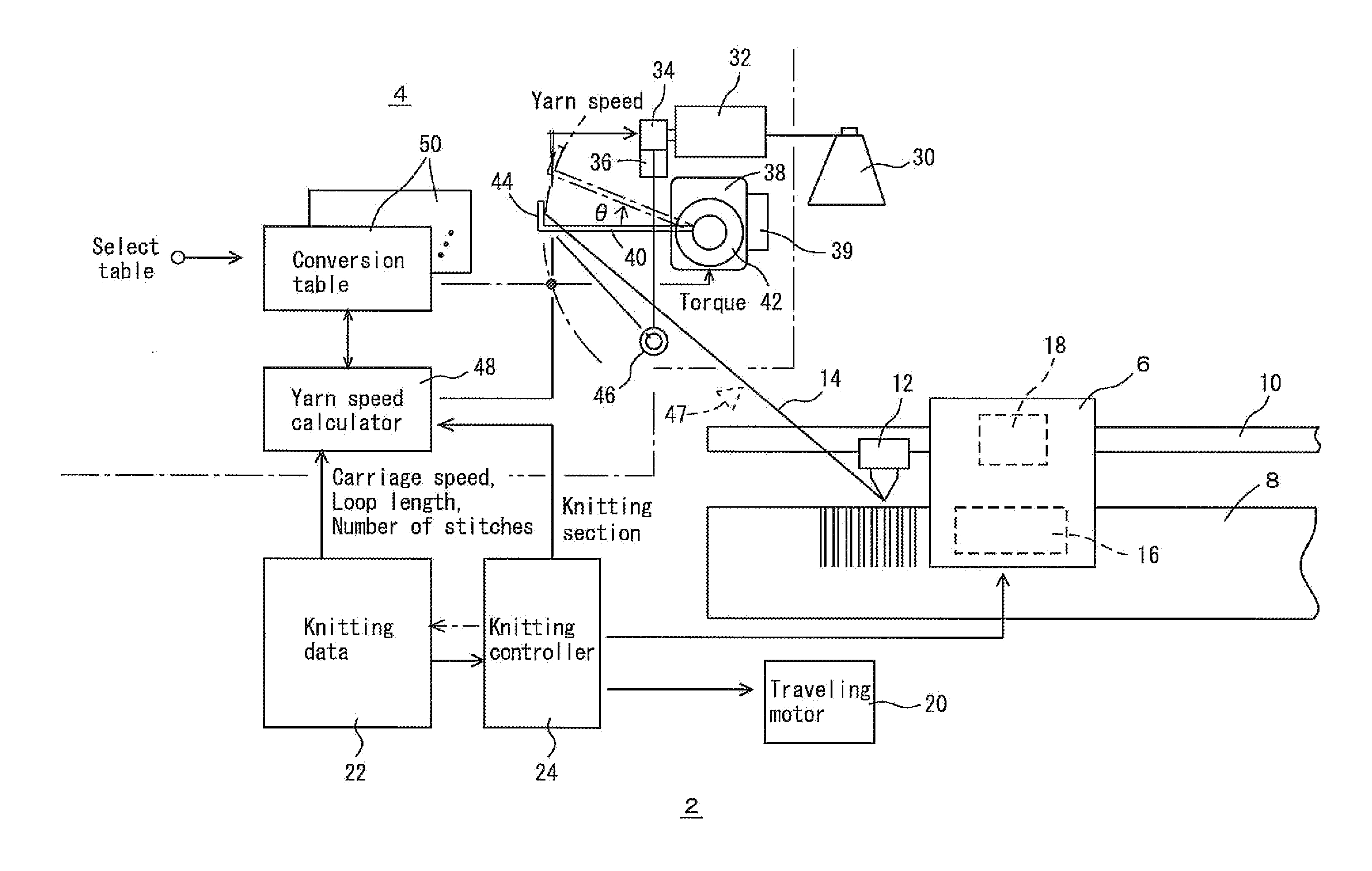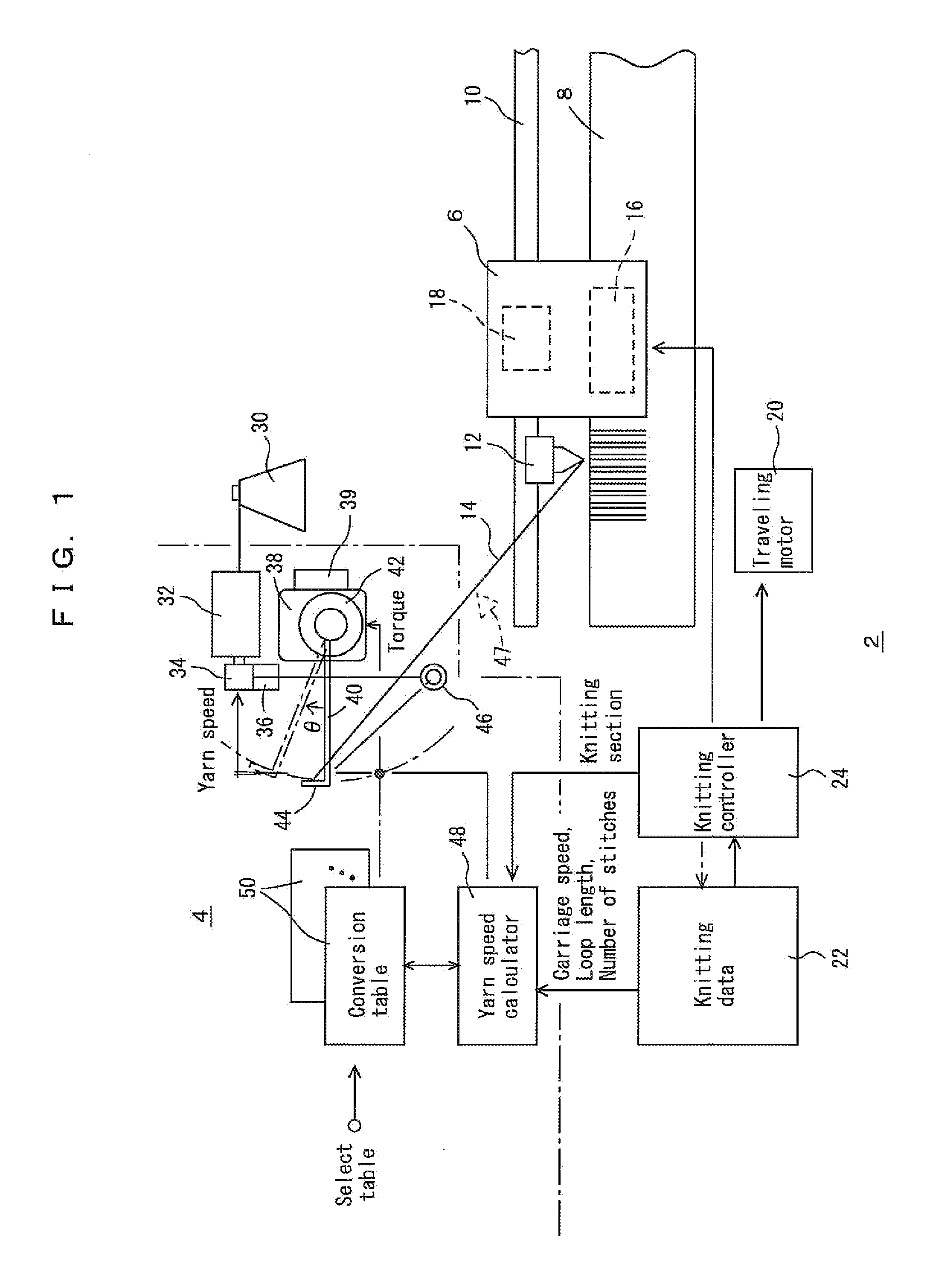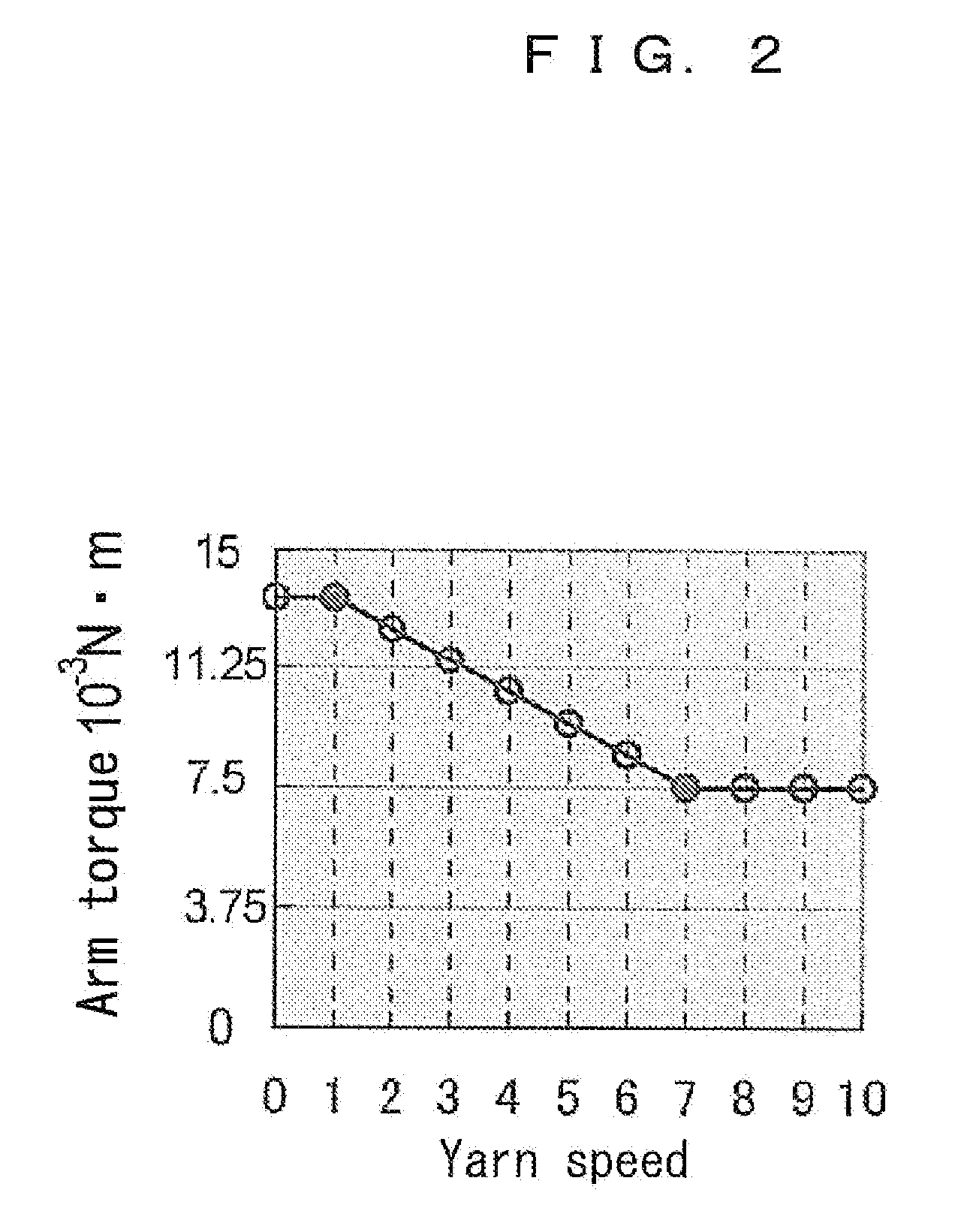Yarn feeding device and yarn feeding method for knitting machine
a feeding device and knitting machine technology, applied in knitting, textiles and papermaking, instruments, etc., can solve the problems of reducing yarn tension, high tension peak of yarn, cutting yarn, etc., and achieves the effect of reducing the fluctuations in yarn tension caused by the changes in yarn speed, preventing yarn from cutting, and reducing the number of yarns
- Summary
- Abstract
- Description
- Claims
- Application Information
AI Technical Summary
Benefits of technology
Problems solved by technology
Method used
Image
Examples
embodiments
[0036]An embodiment of supplying yarns from the left-hand side to a flat-knitting machine is illustrated in FIGS. 1 to 9, but the yarns may be supplied from above or the right-hand side. In these diagrams, reference numeral 2 represents a flat-knitting machine body, which may be a circular knitting machine body, and 4 a yarn feeding device. In the embodiment, the yarn feeding device 4 is integrated with the flat-knitting machine, but the yarn feeding device 4 may be independent of the flat-knitting machine body 2. Hereinafter, the flat-knitting machine body 2 is simply referred to as “flat-knitting machine 2.” The flat-knitting machine 2 has a carriage 6 and one or two pairs of needle beds 8. Carriers 12, which are moved along carrier rails 10, are operated by, for example, the carriage 6, to supply yarns 14 to knitting needles of the needle beds 8.
[0037]The carriage 6 has a needle selecting device 16 to select which knitting needles of the needle beds 8 to drive, and performs knitt...
PUM
 Login to View More
Login to View More Abstract
Description
Claims
Application Information
 Login to View More
Login to View More - R&D
- Intellectual Property
- Life Sciences
- Materials
- Tech Scout
- Unparalleled Data Quality
- Higher Quality Content
- 60% Fewer Hallucinations
Browse by: Latest US Patents, China's latest patents, Technical Efficacy Thesaurus, Application Domain, Technology Topic, Popular Technical Reports.
© 2025 PatSnap. All rights reserved.Legal|Privacy policy|Modern Slavery Act Transparency Statement|Sitemap|About US| Contact US: help@patsnap.com



